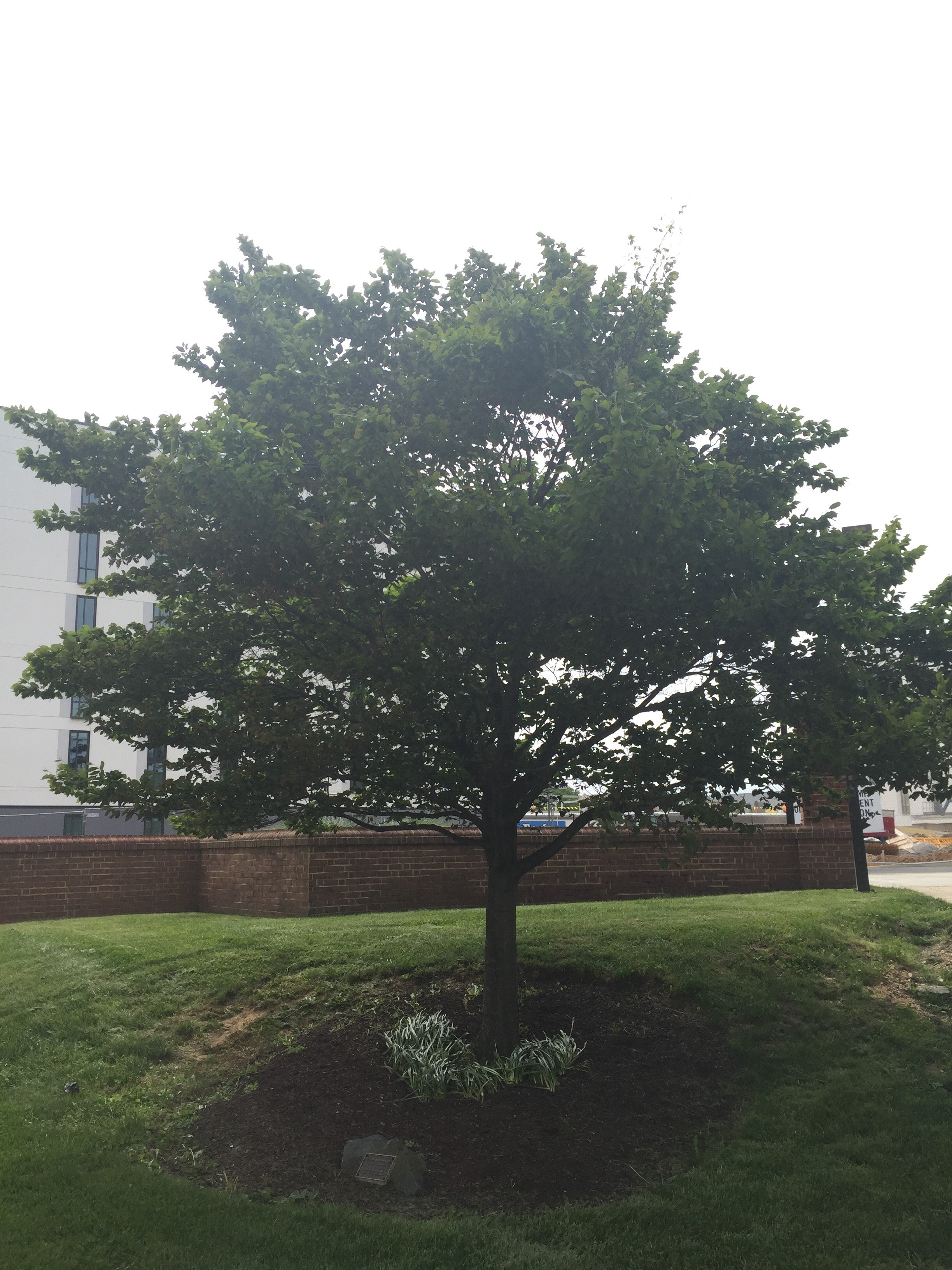Nalwasky, Kelly Elizabeth
About Kelly Elizabeth Nalwasky

A European beech is dedicated to Kelly Elizabeth Nalwasky, a sophomore University of Maryland student from Guilford (near Baltimore). Kelly Nalwasky attended Western High School and later went on to study at UMD with her identical twin sister, Caroline. Described as a popular, generous, dedicated and much-loved student, she was on her way to receiving her degree in psychology so that she could pursue pastoral counseling and work with low-income families. Ms. Nalwasky was an active member of the Second Presbyterian Church and engaged in mission work in Mexico and in rebuilding a church in Arkansas that was damaged in an arson attack. Ms. Nalwasky was was found dead in her dorm room in La Plata Hall on January 29, 1998, with no known cause and no foul play suspected.1 Kelly Nalwasky is buried at the Bethesda Cemetery in Aberdeen, North Carolina.2
About the European Beech
The memorial tree dedicated to Kelly Elizabeth Nalwasky is located between Ellicott (northeast side) and La Plata Halls. It is a European beech (Fagus sylvatica), a large deciduous tree known for its smooth, gray bark, short trunk and low branches.3 It is distinguished from the similar American beech (Fagus grandifolia) through its shorter stature, darker bark and shorter leaves. This tree is native to central and southern Europe and was brought to America by European colonists in the mid-1700s. Its species designation, sylvatica, is Latin for “growing in woods” or “forest-loving,” a perfect description of a large, shade-providing tree. The European beech usually grows to 50-60 feet tall with a dense, rounded-spreading crown of foliage and a trunk diameter of 2-3 feet. This specific tree is relatively young, so it is only 14.0 feet tall with a trunk diameter of 4.2 inches and crown radius of 7.1 feet. The European beech has oval-shaped to elliptical, wavy, dark green leaves with parallel veins, and they turn a golden bronze in autumn. Yellow-green flowers bloom in April-May, with male flowers in globular clusters and female flowers in short spikes. The female flowers form triangular beechnuts that ripen in the fall and are technically edible, although eating them is not recommended or encouraged on campus.4

Written by Joanna Barton
- https://www.baltimoresun.com/news/bs-xpm-1998-01-31-1998031034-story.html
- https://www.findagrave.com/cemetery/223140/bethesda-cemetery
- https://www.mortonarb.org/trees-plants/tree-plant-descriptions/european-beech
- http://www.missouribotanicalgarden.org/PlantFinder/PlantFinderDetails.aspx?kempercode=a866
